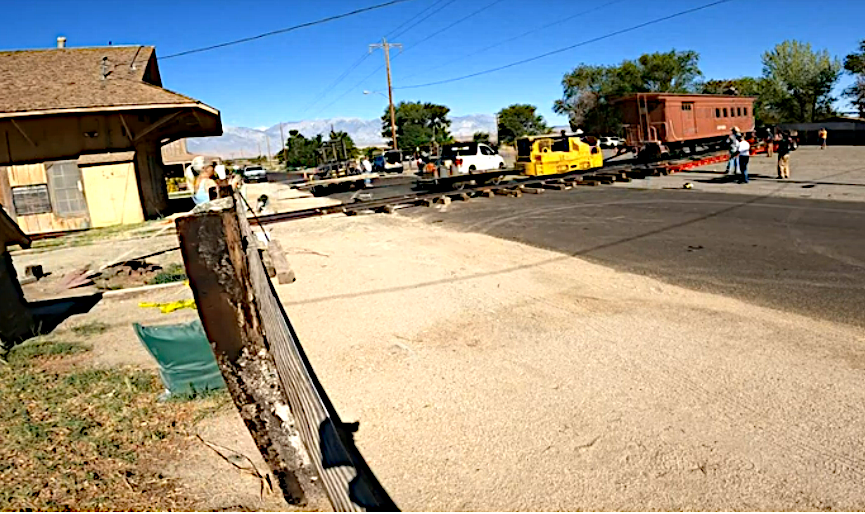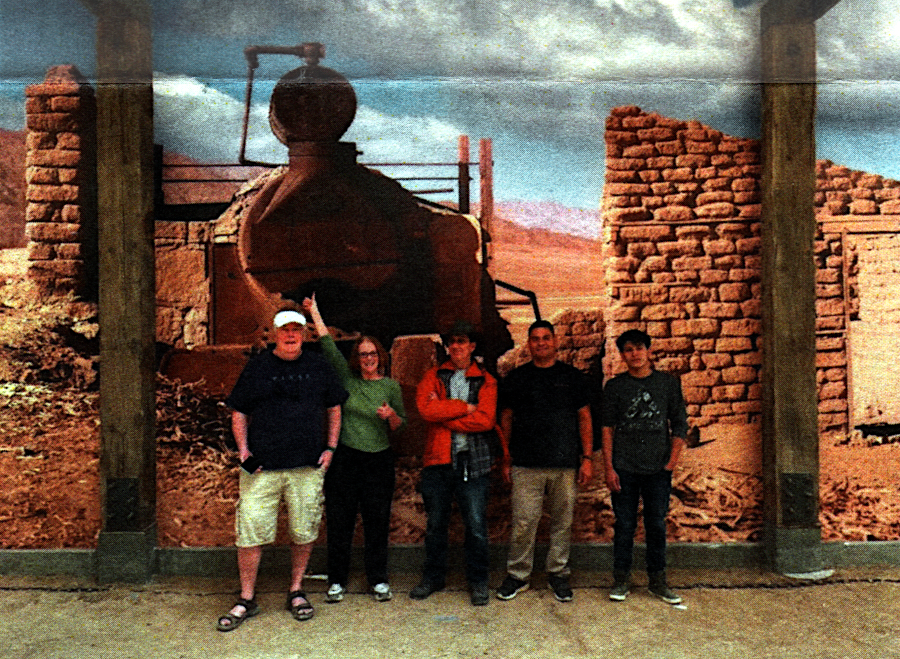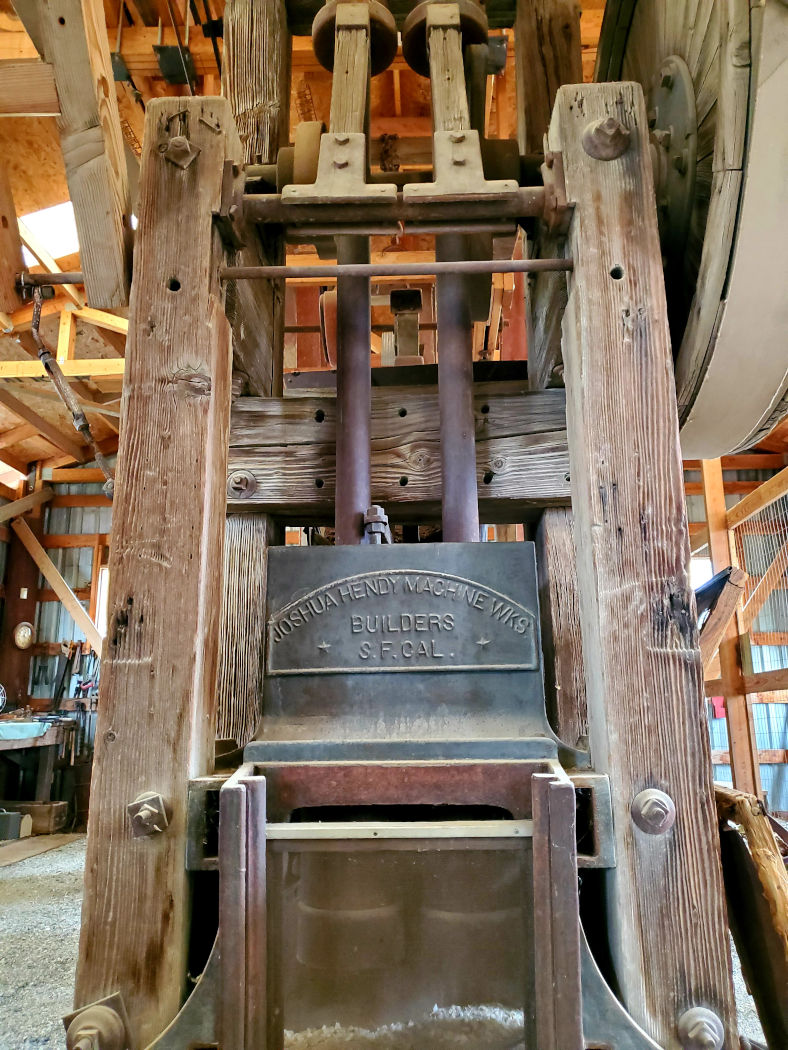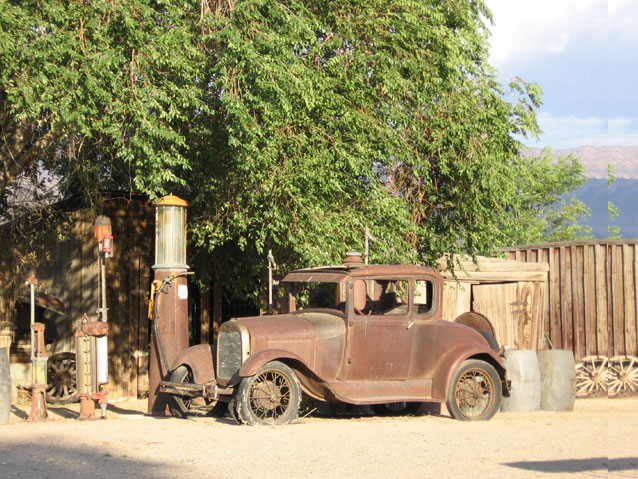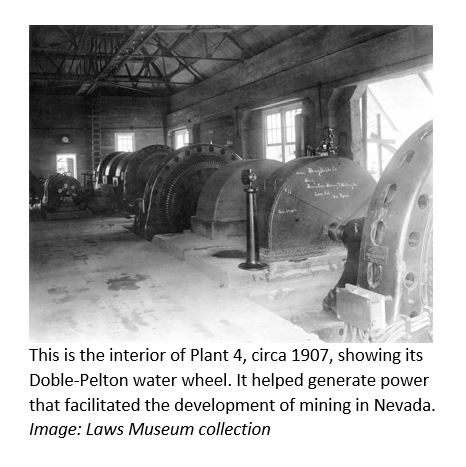Borax Wagon Mural Installation
Submitted by Preston Chiaro and Henry Golas of the Death Valley Conservancy
One of the DVC's most valued partnerships is with the Laws Railroad Museum and Historical Site in Bishop, CA. During 2016, while the DVC were constructing our reproduction Death Valley 20-Mule Team Borax Wagons to appear in the 2017 Rose Parade in Pasadena, CA, Laws raised funds and constructed a dedicated exhibit barn to house the wagons. At that time many ideas were tossed around regarding what additional exhibits might go into the wagon barn; the notion of installing a mural on the back wall was near the top of the list. We just needed time to raise the funds for it. We're happy to announce that this project to enhance the wagon barn experience is now completed.
From the Archives of Poleta Mine and Mill
The stamp mill and feeder here at Laws Railroad Museum and Historical Site were built by the Joshua Hendy Machine Works in San Francisco California. . Joshua Hendy came to this country from Scotland in 1836 and learned the machinist's trade. In 1851 at the age of 33 Joshua traveled to California and worked in San Francisco until 1852 when he had saved enough money to build a saw mill on the coast near Fort Ross. In 1855 he returned to San Francisco to manufacture parts for mills. By the 1860's the Joshua Hendy Machine Works was also making parts for mining and milling equipment.
Train Maintenance 2021 (Video)
JUNE 2021: --The Engine House gang is busy with painting and doing some minor repairs on the “display train”. Many thanks to volunteers Paul Kirsten, Don Stansifer, Lynna Walker, Beverly Schroeder, Bob Bauer, Paul Thompson, Marty Blodget, Jim Morrow, and help scraping old paint from the Inyo County Probation Dept.
At the time of this writing, all the cars have been repainted and we are preparing to do some needed repairs to Caboose 401.Caboose 401 has been cleaned up inside and new age-appropriate locks put on the walk-through doors. Soon it will be moved into the engine house for a new top layer on the roof and other repairs.
Early Schools of the Northern Owens Valley
A sign of an established settlement in the Wild West wasn’t necessarily how many miners, hotels or saloons had collected in one spot; those came and went. The sign of a viable community was the establishment of a school. It represented family life, a stable society, and educated children who would become the foundation of their community. But there was no school to greet the first Euro-Americans who settled in the northern Owens River Valley.
Southern Pacific #18 - Back in Steam! (Video)
Southern Pacific Narrow Gauge locomotive #18 steams again after restoration at the Laws Railroad Museum near Bishop, California, on September 24, 2017.
YouTube video courtesy of Gottfried the Hirsute
A Brief History of Laws Depot
(compiled from the "Story of Laws" by Clarabelle Hawkins)
On May 10, 1880, the Carson and Colorado Railroad Company was formed and incorporated by William Sharon, H. M. Yerington and Darius Mills. They planned to run the narrow gauge railroad from Mound House, Nevada, and the Carson River to the Colorado River, calling it the C&C Railroad. It never reached the Colorado River but stopped at Keeler, California. It has often been referred to as "the railroad that was built 300 miles too long or 300 years too soon"
As the word was out that the railroad would run east of the Owens River, people started to arrive at what is known now as Laws. A new railroad town was built. It took 3 years for the rails to be laid from Mound House to Laws, with the first train arriving in April of 1883.
Long Gone River Towns of Owens Valley
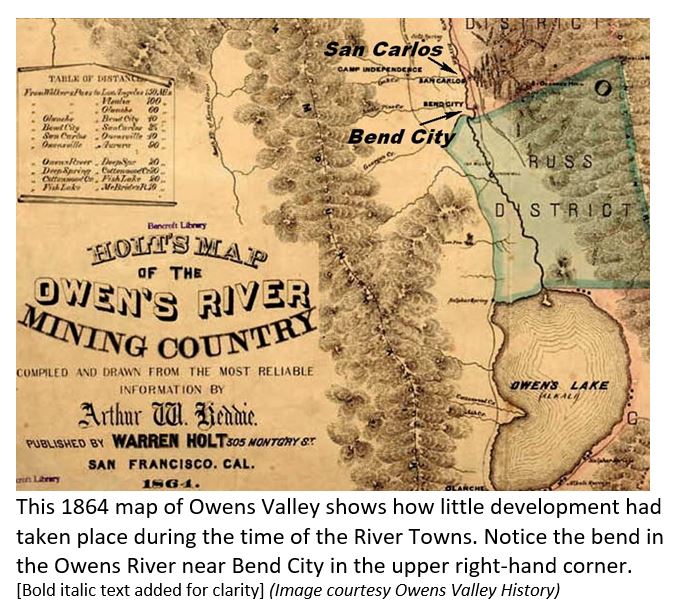 Before Inyo County existed there were towns along the Owens River populated by miners castoff from the declining California 49er Gold Rush. They were drawn to the Owens Valley River Valley, as it was called back then, by reports of riches coming from its eastern mountains. In the early 1860s miners, followed by merchants, coalesced into bustling communities along the eastern edge of the Owens River: Owensville, San Carlos, and Bend City.
Before Inyo County existed there were towns along the Owens River populated by miners castoff from the declining California 49er Gold Rush. They were drawn to the Owens Valley River Valley, as it was called back then, by reports of riches coming from its eastern mountains. In the early 1860s miners, followed by merchants, coalesced into bustling communities along the eastern edge of the Owens River: Owensville, San Carlos, and Bend City.
Feasting on Power
The tranquil streams of Bishop Creek Canyon belie the powerful economic impact they had on Nevada and California in the early 1900s. The canyon’s ideal combination of water and gravity produced hydro-electricity, creating great wealth for two states and two dominant industries. But practical use of electricity was in its infancy. Just a few decades earlier those who consumed it had to live close to power generators. For miners in the western deserts, that was a problem.
The Birth of the Laws Museum
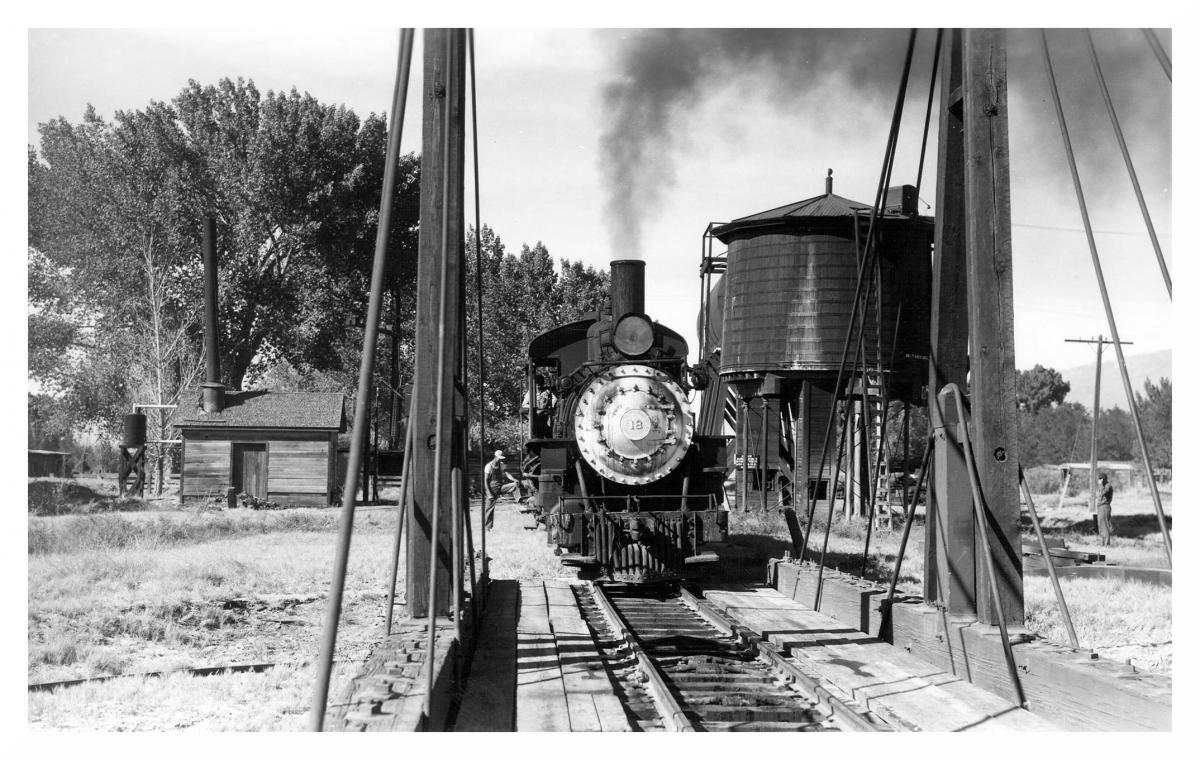 Laws Museum grew very slowly at first, starting with museum members painstakingly restoring the Agents House with authentic period furnishings actually used by the early pioneers. From the mid-60s to the early-70s, members and volunteers had occasional “work parties” to clear the grounds, trying to stay ahead of the brush and weeds. Then buildings began to arrive
Laws Museum grew very slowly at first, starting with museum members painstakingly restoring the Agents House with authentic period furnishings actually used by the early pioneers. From the mid-60s to the early-70s, members and volunteers had occasional “work parties” to clear the grounds, trying to stay ahead of the brush and weeds. Then buildings began to arrive

